[Published at Living Life Fearless] Multihyphenate Juliet Landau’s feature length directorial debut, A Place Among the Dead, deconstructs the nature of the narcissist through an acutely apt metaphor of vampire mythology, ever prevalent in the pop culture narrative of our society, presenting a searing thesis about the genesis of evil. Landau, most recognizable for her role as Drusilla in Buffy the Vampire Slayer and its spinoff series, Angel, has built a steady career in film and television, creating a name for herself separate from her famous parents, Oscar winner Martin Landau (Ed Wood, in which Juliet also starred), and Golden Globe nominee Barbara Bain. Both victims of narcissistic households growing up, Juliet and her husband, and co-producer and co-writer on A Place Among the Dead, channel their collective experience to invite the audience into an interactive, therapeutic viewing experience through a breaking of the fourth wall, making the film truly unique among its documentary counterparts. With interviews from Gary Oldman, Ron Perlman, Anne Rice, Lance Henriksen, and Joss Whedon, this scripted documentary plays with fact, fiction, and the fantastical.
In the middle of her press tour, Landau had some free time to chat about A Place Among the Dead, the conflation of narcissism and evil, growing up under the tight grip of narcissists, our societal fascination with vampires, her past and future work, and her upcoming docuseries, The Undead Series.

Congratulations on your first feature. It sticks with you like the passing of a dear loved one, lingering like its haunting ghost.
Thank you so much. They’re beautiful words. I really appreciate it. It means the world.
I loved how, from the very beginning of the film, you use the narration device to expose these negative inner thoughts, and you slowly turn the volume up. The juxtaposition between those thoughts and the flashing of the images of your parents was so effective.
I’m so happy. My husband, Deverill Weekes, and I co-wrote, co-produced the movie. And we come from similar backgrounds, and we really talked about the fact that we had never seen a film where the voiceover sounded remotely like the thoughts running through our minds. And if you come from this kind of background, you’re not your authentic self. You let these negative thoughts or voices run you and lead you to destructive choices. The whole point of the movie is that there’s a different way that, as an adult, we can make different choices. But my alter ego is not doing that. She’s making destructive choices. Hopefully, I’m not doing that in real life anymore, but I did for a long time. And it’s interesting that you say that because we all make these agreements with our parents, and if you don’t break those, they become those voices that drive you. One of the other interesting things that we found out when we were doing research for the movie is that 80% of the thoughts in everyone’s minds, whether you come from the most stable, loving environment or not, 80% of the thoughts that everybody is thinking are negative.
And we thought that was a really interesting percentage, because what if we could change that and even make it 40%? How much better would life be and how much more could we accomplish and give to the world rather than sabotaging?
No kidding. That is a disturbing but not exactly surprising statistic.
When you think about it, if you look at your inner monologue, how nice is that voice inside your mind most of the time?
Right. We’re often so self-critical. And would you say your shared background is a lot of what inspired you to make this fourth-wall doorway for to beckon the audience to acknowledge their own thoughts?
Yes. I chose to make the film searingly personal. There’s the old adage, “The more personal, the more universal.” I’m inviting the viewer to become the participant. The whole point is to make an entertaining movie and to give voice to what has affected many to open up a dialogue like we’re having right now. I played with the first perspective and third perspective. This was to make the film experiential and visceral and emotional. I want the audience to be not the spectator, but engaged and inside the experience. And I chose to be inside my alter ego, Jules’ POV, for much of the film to capture what it feels like to be near a malignant narcissist, how destabilizing, how confusing, how disorienting, how you lose your sense of yourself bit by bit, how harrowing that is. The psychologist, M. Scott Peck, described it as feeling confusion and revulsion at the same time. So I implemented blurs and static when Jules is near that character.
That is a really great visual touch. And speaking of that, the imagery is beautiful and evocative. Creatively, what are some of your filmmaking or visual inspirations?
Thank you so much. Well, Dev and I gave a lot of attention and detail to the look of the movie. We put together a look-book, which every department worked from. We did a whole series of camera tests. We spent a huge amount of time on the color correction with screen grabs before we even went into FotoKem to color correct. From day one, we talked about the juxtaposition between the look of the film and the subject matter. We wanted to create a dreamlike, mesmerizing beauty to collide with the stark psychological terror of the story. Rather than films so much, A Place Among the Dead is largely inspired by two books. M. Scott Peck’s People of the Lie, who I mentioned before, and another psychologist named Robert W. Firestone – his book, The Fantasy Bond. There are three case studies in M. Scott Peck’s book which are profound. But of course, with A Place Among the Dead, we’re talking about this through art and entertainment.
I’m going to have to check those books out. And this evil that Jules chases in this fantastical narrative, it represents depression, anxiety, trauma manifested, mental and behavioral disorder, psychosis, unseen carnage and destitution that looms over our society and ideology – violence, war, death, all of the above. And you weave in a personal childhood trauma subnarrative into this segment of the film. How did the process of making this film affect your relationship to that trauma over time?
It’s a through line throughout the film, and the mission was sort of to make a movie where the subject matter is tackled because we haven’t really seen that before, and society as a whole is reticent to talk about this. I used my experience as a device. We did some sneak peeks just when we completed the film before lockdown, and then Halloween weekend we had the worldwide virtual interactive premiere and some special screening events. And every single time, the audience has been very moved. Many people crying and staying – at our sneak peeks, they stayed for over two hours. On each of these events, it’s been like three and a half hours where the entire audience stays on Zoom with the cast and crew and is talking, first, about the movie, and then sharing intensely personal stories. And what’s so interesting is whether it’s familial or it’s an ex-husband or an ex-girlfriend or a boss or a friend or a coworker or our world leaders, the traits are the same, and the experience of dealing with these type of people is exactly the same.
The parents are shown in 44 seconds of the 77-minute movie. To me, that’s a metaphor for our lives. We spend 15 to 18 years being reared, and then we spend the next 50 or 60 operating out of that unless you take stock, unless you make conscious choices, which my alter ego, Jules, is not doing. It felt like the best way to sort of frame this discussion and provoke a conversation.

This film firmly falls into the category of Art as Therapy.
I believe in art as a way to explore the human condition. It’s a way to hold a mirror up to ourselves and to provoke much-needed conversation. Dev and I think if we’ve seen a movie like this when we were 18, it would have changed the course and journey of our lives. Often art is a place where we talk about things that society shuns illuminating.
A Place Among the Dead begs the questions, “Does our past define us?” And we have a choice. We can either let it or we can either make an ongoing effort to overcome our past. Do you conflate then evil with narcissism?
I do. “Does our past define us?” is the question posed in the movie. The film shows a character who’s letting her past define her rather than changing those tapes and carving a different present. She’s reenacting the unwinnable parent, but worse and worse each time. The film shows the systematic snuffing of spirit, life, life force, all the way to the heinous snuffing of life.
Another theme that this film tackles is the inevitability of aging and death, and humankind’s tendency to deny that truth. That’s amplified by not only Hollywood, but also society in general. Is that part of the reason why we, as a society, are fascinated with immortal vampires?
I think so. I chose the vampire genre for a number of reasons. First, to make an entertaining movie. Second, to lull the audience into a sense of safety to explore unsafe and radical ideas. Third, to bring in my and the other actors’ histories. And last, because the vampire is the perfect metaphor for the ultimate narcissist. You’re never quite sure if a particular character in the movie is a vampire or if he’s a serial killer who emulates a vampire, but either way, the traits are the same. He’s a being which drains time, life, life force for his own needs, for his own survival, with no regard for any other being. Societally, there’s an obsession with youth, and as you were mentioning, it’s another current that runs through the picture and ties into vampirism. The idea of staying youthful in appearance forever feeds into narcissism, too, because it values superficiality over substance.
And oftentimes, like vampires, narcissists don’t realize the destruction they cause.
It doesn’t even register. We’ve been talking with Dr. Ramani who’s the premier expert on narcissistic personality disorder and narcissistic abuse – psychologist, author, lecturer. She really loves the movie, and it’s been interesting talking to her about that, and just also about how societally, this is a time where narcissism and cruelty and evil actions are escalating, sadly. Narcissists don’t change, and so it’s inherent in what you’re saying with the vampire character who basically does not change. And also, the thing with narcissistic personalities is that they not only are just self-involved, it’s that they actually don’t want others to do well. They basically don’t want others to thrive because they feel it’s some reflection on them, so they always need to be above and keeping people below them as well.
I want to talk about The Undead Series.
Totally. A Place Among the Dead is entirely scripted. It is a meld of fact, fiction, and fantastical. And one of the factual elements in it is that we are making a vampire documentary project, which we are doing, which is called The Undead Series. So it is completely separate except that it’s one of the factual elements that’s in the movie. One of the things that’s been fun with the screenings that we’ve been having is, from our premiere to the three previous screenings, many people came to all four for a number of reasons, but one of them being that they wanted to pick out more and more of the factual elements and more of the Easter eggs that are in the film.
Is this series something you’re still working on?
Yeah. We have 35 interviews in the can. All of the same people who worked with us on A Place Among the Dead came back to work with us again, plus Willem Dafoe and Tim Burton. The Undead Series is completely different in tone to A Place Among the Dead. It’s an unscripted/documentary/interview show which I host. Have you ever seen Jerry Seinfeld’s Comedians in Cars Getting Coffee?
Yes, I have.
So this is Vampires in Coffins Getting Blood.
[laughter] That’s awesome. Okay.
And then basically we’ve gathered the who’s who of the genre together in one place, which has never been done before. Each episode is 20 minutes with one interviewee. And we’re signing paperwork this week on the project. That’s pretty exciting.
Congrats. That’s super exciting. I’m sure Tim Burton is an interesting interview.
He’s an incredible interviewee.
He’s one of my favorites. I fell in love with his work, when I was about 11, the first time I saw Edward Scissorhands.
He’s amazing. It was wonderful because working with Tim on Ed Wood was a phenomenal experience. And then interviewing him for The Undead Series, it was really fun because we were in England, and he had availability for us to go to his office, and his office previously was Arthur Rackham’s home, who was the creator of Winnie the Pooh. And it’s this beautiful, whole street with these amazing houses. And as we approached, there’s one particular house that had this crooked, unbelievably Tim Burton-esque tree in front of it, and we knew that must be Tim’s, and of course it was, and then we interviewed him there.
Oh, that’s so cool. I’ve had the privilege of interviewing Willem Dafoe before. He’s a very nice and insightful person, so I’m looking forward to seeing what he has to say about the genre.
He is. And it’s interesting with Willem because he has such a strong, intense face, and he’s such a lovely, sweet, gentle soul.
You’re a big bad on Buffy who wasn’t ever defeated.
No. No. I’m still undead out there.
So have you been approached for any type of reboot?
I haven’t. I haven’t as of yet.

Obviously, there’s a pandemic right now, but have you been able to virtually attend any sort of Comic-Con events for your past work or for A Place Among the Dead?
I haven’t. But one of the things that was incredible is, for our worldwide premiere, we were sponsored by MAC Cosmetics and New York Comic-Con. And the thing is, people have done panels at Comic-Con, which I’ve done as well on shows or movies, which generate later ticket sales. But this was revolutionary in the fact that we made the film available right there, virtually, for everyone all over the world to stream the movie and watch together, followed by an interactive Q&A with Gary Oldman, Robert Patrick, Lance Henriksen, Charlaine Harris, and myself were on, and then the interactive Zoom. And it was a brand new way to reach the audience with the closure of cinemas everywhere as well as the general direction that movies were going before COVID. This will probably be some aspect of the future. And it felt like the water cooler cinema experience, which has been sorely lacking, culturally, where everything has been so spread out and dispersed. We were able to put the fans at the forefront and actually have this conversation all together rather than people streaming whenever and talking about it whenever.
What a great layout and platform.
It was cool because our distributor is Modern Films, and they’re an awesome female distribution company located in the UK. And this is the first time that they’ve gone worldwide. And they’re innovative in terms of they do the traditional release plan and press, and then they also do these screening events, which was perfect for what we wanted in terms of wanting to have a dialogue.
Do you have anything else exciting on the horizon?
I was doing a movie called Penumbra. It’s directed by a director named Thomas Negovan, and it’s produced by E. Elias Merhige, who directed Shadow of the Vampire and Suspect Zero with Sir Ben Kingsley. Really interesting project and incredible role. I was working with Jake Busey. I really enjoyed the shoot in the desert. And it was nice to be in an environment where people were being very safe and get to be creative because it’s obviously a daunting time for everybody to figure out how to move forward.
And then just before lockdown, I was recurring on TNT’s show, Claws. I was supposed to do many more episodes, but obviously got put on hold, but then shot an episode a couple of weeks ago as well. They asked me to have my character come back, and it was right in the midst of the release and everything. So they ended up working it out that my character was on a cruise in the Antarctic, and so I Zoom called into the scene where I was with the family and Carrie Preston, who’s the lead on the show. And all of the stuff that’s going on between us – we got to play out, and it ended up working out. It’s funny because we were basically shooting a TV show in our living room. My character is named Cordelia, and she’s a very wealthy socialite. And basically, Carrie’s character has conned–well, I can’t say many spoilers. But basically, it was a reading of the will, and the way that they staged it is I’m on a huge screen. So I’m this huge presence. So it’s actually quite funny. When I saw that, I was trying not to crack up in the takes because my presence was like The Wizard of Oz.
Please tell Dev congratulations, as well, on this project. It was such a phenomenal work of art, and it really struck a chord with me and so many others, it sounds like.
I will, absolutely. Well, this has been amazing. The time just flew by. It really did.
No kidding. Thanks so much for your time and your generosity with your answers, Juliet. I really appreciate it.
Well, thank you so much also for your questions. They were really amazing and interesting and thought-provoking on my end as well, so I really, really enjoyed this.
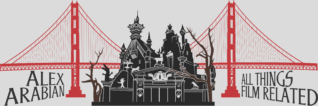
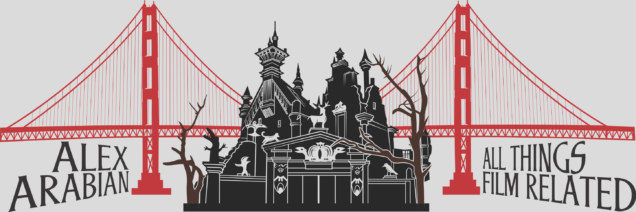
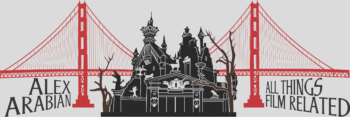

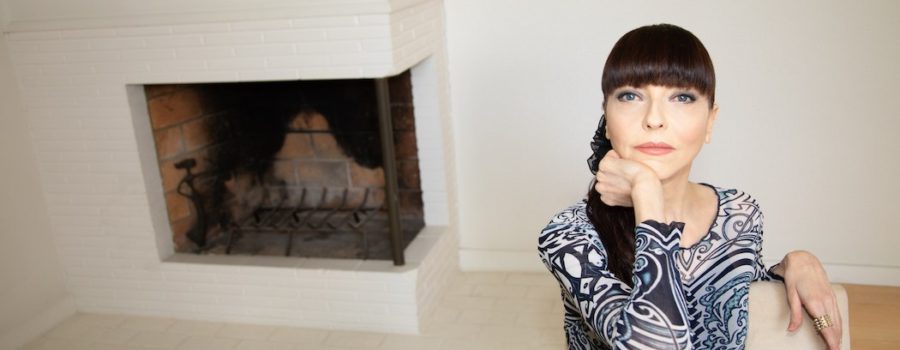
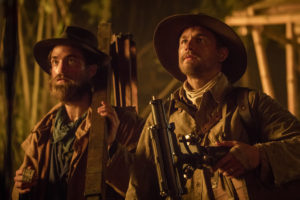
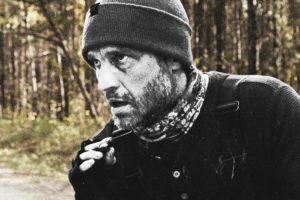
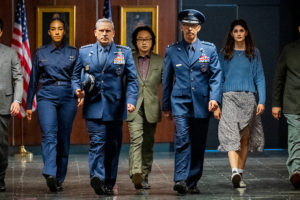
Leave a Reply
Your email is safe with us.